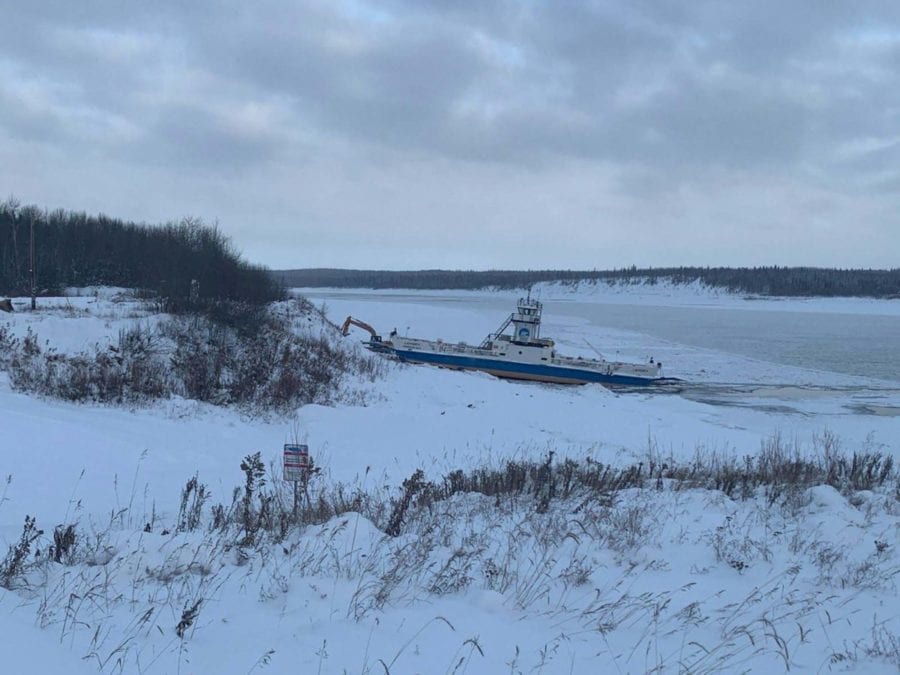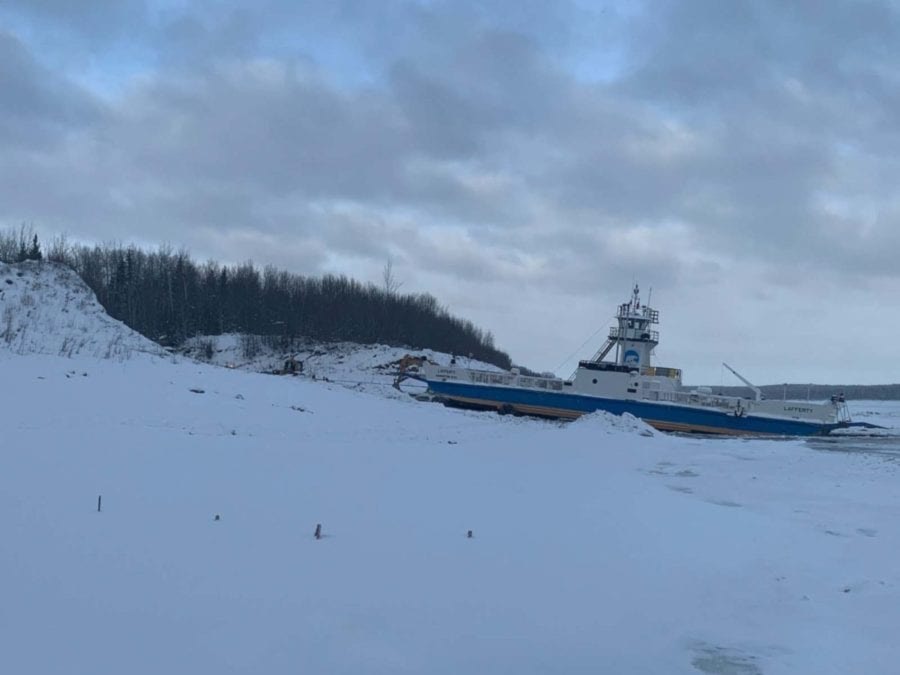The ferry to Fort Simpson has been recovered and its crew are safe after the vessel's engine quit and it became trapped in the Liard River ice for a couple of days.
The GNWT Department of Infrastructure reported on Thursday morning that the MV Lafferty ferry was back along shore as of Wednesday night and was expected to be pulled from the water by end of Thursday.
"Crews used winch lines and equipment to move the vessel, and the captain was able to manoeuvre the vessel in under its own power once it was closer to shore," stated Greg Hanna, department spokesperson. "Our crews were kept safe throughout, and have now gone home after a few long days."

contributed photo
Around noon on Monday, the ferry became stuck in the river with a failed engine and limited fuel, about 200 metres from shore.
"The (vessel) had been at the landing where the vehicles pull up normally," said Fort Simpson Mayor Sean Whelly. "Because the ferry had been shut down the day before (Sunday), they fired up the boat there and were to go where they pull it out (of the water) down the river a little bit.
"While they were doing that, one of the engines quit. When that happened, the ice and what have you pushed it backwards and it became wedged up against the sandbar without the power to push anything."
Jagged ice around the vessel had it locked in place, making it difficult to reach. As temperatures dropped into the -13 C to -16 C range this week, the freezing conditions trapped the boat tighter in its location, meaning the three crew members were stranded.
Hanna stated that the department hired Arctic Response Canada to help ensure safety of the ferry's crew, who remained onboard until the boat was recovered.
"A helicopter delivered additional supplies to the vessel (Wednesday)," said Hanna. "There (was) adequate fuel and supplies onboard for staff. Staff also (had) communications equipment onboard and regular communication with the vessel... continued as efforts to move the vessel ashore (were) undertaken."
It had become increasingly urgent to get the ferry out of the water as doing the work over the solidified winter ice could have led to substantial damage as well as higher equipment and labour costs to retrieve it.
As it stands, repairs to the steering pump are estimated to cost $500, according to Hanna.
